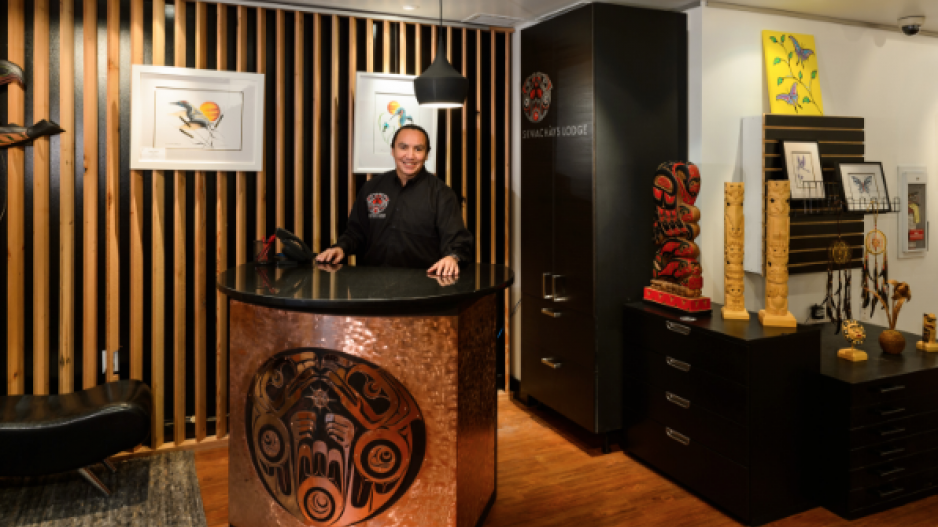The K’awat’si Economic Development Corp.’s (KEDC) plan to spend $4.5 million to renovate an 85-room hotel in Port Hardy and make it a luxury, aboriginal-themed resort is the most recent example of a First Nation investing to capitalize on B.C.’s booming tourism sector.
The Osoyoos Indian Band was a trailblazer in 2005 when it built the Spirit Ridge Vineyard Resort & Spa in partnership with Bellstar Hotels & Resorts. That condo-hotel has suites that are individually owned and put into a rental pool.
The Little Shuswap Lake Indian Band then substantially renovated its Quaaout Lodge and Spa in Chase in 2010. That same year, the Vancouver Native Housing Society (VNHS) opened the renovated 18-room Skwachàys hotel at 31 West Pender Street. All hotel rooms have distinctive aboriginal art and decor while the rest of the building includes 24 rooms that are provided to aboriginal people who are at risk of homelessness.
“We help aboriginal artists by subsidizing their rent through the profits of the hotel and gallery,” said VNHS CEO Dave Eddy. “To my mind, that’s the real story of what we do.”
His hotel has coasted on what tourism industry insiders say has been one of the best tourist seasons Vancouver has ever seen.
“As of August 24, our average daily rate for the month to date was $196.52,” Eddy said. “We had 99.3% occupancy. So, of the 429 room nights so far this month, we sold 429.”
With that kind of demand, it is no wonder other aboriginal groups want in on the action.
The roots of KEDC’s project can be traced to an Aboriginal Business Match (ABM) conference a few years ago, when KEDC CEO Conrad Browne met Mizare Hospitality principal Graeme Barrit.
KEDC bought the Port Hardy Inn on April 1 and then contracted Mizare Hospitality to manage it.
“After the ABM, I visited Conrad in Port Hardy, and he was dead set that KEDC wanted to be in the hotel business,” said Barrit, who did some early pro bono advisory work on Skwachàys.
“We talked about the possibility for a greenfield building but my recommendation was to buy an existing property for two reasons. Not only are there cost savings but you’ve also taken a competitor out of the marketplace.”
Occupancy has been strong this summer, and Barrit said the hotel will stay open during winter renovations.
Once the renovations are completed, he expects the hotel will rank as a four-star property.
The hotel’s target demographic is travellers who do what Barrit calls the “circle tour,” where they drive north on Vancouver Island from Victoria.
“It’s a gorgeous drive,” he said. “You take the Island Highway to Campbell River. The road north from Campbell River is one of the best-maintained roads in the province.”
Those tourists then typically take a ferry from Port Hardy to Prince Rupert.
Other potential hotel guests include business travellers.
“We’ll serve people in First Nation communities from up and down the coast who currently fly by float plane down to Port Hardy and then continue to Vancouver on Pacific Coastal Airlines or go to Nanaimo or Victoria for meetings,” Barrit said. “We’d like to interrupt that trip by having a place for them to stay in Port Hardy.”
Figures from the Aboriginal Tourism Association of BC reveal that the province’s aboriginal tourism industry contributes $35 million annually to the B.C. economy. By 2017, the association expects that number to increase to $68 million. •




